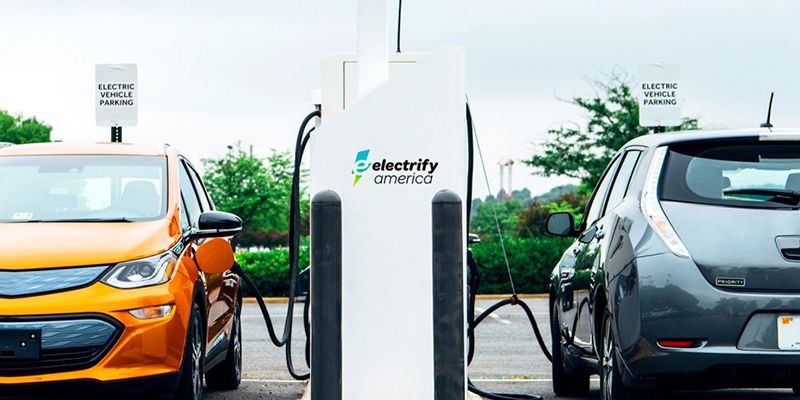Buy Your New EV before the Government Gets Its Act Together

The Inflation Reduction Act made big changes to how the federal government incentivizes electric-vehicle purchases when it was enacted last fall, removing overall sales from consideration in favor of monetary limits and domestic production and sourcing.But the IRS hasn’t yet said how it will calculate the sourcing requirements, which means we’re about to enter a strange period for EV buying in which some of the old rules are gone, but not all of the new rules have kicked in.We expect the Chevy Bolt EV and EUV to have a good few months of sales, as GM already reduced prices by around $6000 for 2023, and the electric hatchbacks will now, somewhat surprisingly, qualify for the full $7500 tax credit on top of that until at least March.
It’s been more than a little frustrating for those of us covering electric vehicles these past few months. Automaker representatives would not say clearly whether or not their EVs would qualify for the tax credits under the changes introduced in the Inflation Reduction Act (IRA). Turns out it wasn’t their fault. The federal government didn’t make the rules 100 percent clear, and now EV shoppers might be able to take advantage of that confusion for the next few months.
We’ve published explainers about how the IRA changed EV tax incentives, but they were necessarily vague about some details. That’s because the U.S. Department of Treasury won’t actually issue some of the proposed rules until March, and that’s the delay that will open up a loophole on January 1.
To set the stage, remember that the IRA changed the EV rules from the straightforward overall limit of 200,000 qualifying vehicles per manufacturer. Now, for an EV buyer to get the tax credit, there are MSRP and income level limits, and the vehicle needs to be, without getting into the details, made in America with battery components sourced from a country with which the U.S. has a free-trade agreement. The maximum credit is worth $7500, although if the battery minerals aren’t sourced correctly, the maximum value of the credit should be half of that, or $3750. But some of the language in the law wasn’t specific—especially with regard to sourcing—and that means the appropriate federal agencies have to explain what it means.
Oh, Good, a Government Explanation
The Treasury Department and the Internal Revenue Service (IRS) released three minor clarifications this week. The first was an updated list of which vehicles qualify for which level of credit. Second, the IRS clarified the incremental cost for commercial clean vehicles in the coming year. This will allow tax credits to be claimed on EVs under “commercial” use, which includes leasing or ride sharing, without consideration of where the vehicles are made. Third, the new MSRP limits were explained, and the IRS said that the “placed in service” date mentioned in the tax credit is when you take possession of your new EV, not when you bought it. Check out the Treasury Department’s new FAQ page; somewhere in there, you may find the answers to your questions.
So Here’s the Loophole
This brings us to the loophole. There was no clarification issued for the sourcing provisions in the IRA, and the IRS said it won’t release this proposed guidance until March. The delay creates a window for a subset of vehicles like the Chevy Bolt EV and EUV and any Teslas with a price tag under $55,000. These EVs are not eligible for any federal tax credits at the end of 2022 because GM and Tesla each sold more than 200,000 EVs, but they’re about to qualify again. The rule about 200,000 sales goes away January 1, and new rules about MSRP and income limits and sourcing take effect.
Since the IRS isn’t saying what the sourcing rules are, electric vehicles that meet the other requirements can qualify for the full $7500 credit starting January 1. For Tesla, that means a maximum price of $55,000 for the Model 3 and five-seat Model Y, and $80,000 for the seven-seat Model Y EVs. All the Bolt variants will qualify for the full $7500, and since GM lowered the price of the 2023 Bolts by around $6000 compared to the 2022s, the new-model-year Bolts will be a particularly hot deal as long as you can take delivery of your new EV before the new sourcing rules come into effect.
“The information released today is an important step to clarify the new requirements for consumers, businesses, and state and local governments planning to buy electric vehicles soon,” said Ben Prochazka, executive director of the Electrification Coalition, a nonprofit organization that promotes the widespread adoption of plug-in vehicles. “While the proposed guidance for sourcing provisions was not released today, a whitepaper on the direction the Treasury Department may take was released. The whitepaper helps clarify as manufacturers identify which vehicles may be eligible for the tax credits and when the new requirements go into effect.”
Even now, the IRS isn’t able to provide the full EV tax credit picture. While the agency now offers an updated list of which vehicles qualify, it is not complete and “will be updated over the coming days and weeks so consumers looking to purchase a new clean vehicle in the new year should be sure to check it regularly.” No kidding.
This content is imported from OpenWeb. You may be able to find the same content in another format, or you may be able to find more information, at their web site.



